As we know, communication system usually uses a wire or cable to connect sending and receiving devices. Currently, the most common network cable types deployed in communication system are twisted pair vs coaxial cable vs fiber optic cable. Since each of them can be equally applied into network communication, what’s the difference between twisted pair vs coaxial cable vs fiber optic? This article may give some answers.
Twisted Pair Cables
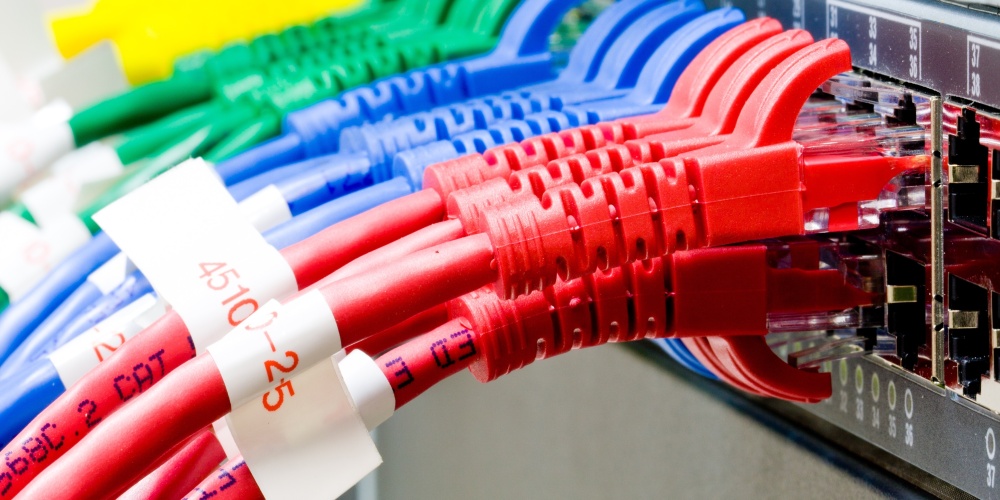 Twisted pair cable consists of a pair of insulated wires twisted together, which is adapted in the field of telecommunication for a long time. With the cable twisting together, it helps to reduce noise from outside sources and crosstalk on multi-pair cables. Basically, twisted pair cable can be divided into two types: unshielded twisted-pair (UTP) and shielded twisted-pair (STP). The former serves as the most commonly used one with merely two insulated wires twisted together. Any data communication cables and normal telephone cables belong to this category. However, shielded twisted pair distinguishes itself from UTP in that it consists of a foil jacket which helps to prevent crosstalk and noise from outside source. It is typically used to eliminate inductive and capacitive coupling, so it can be applied between equipment, racks and buildings. There exist following several different types of twisted pair cables:
Twisted pair cable consists of a pair of insulated wires twisted together, which is adapted in the field of telecommunication for a long time. With the cable twisting together, it helps to reduce noise from outside sources and crosstalk on multi-pair cables. Basically, twisted pair cable can be divided into two types: unshielded twisted-pair (UTP) and shielded twisted-pair (STP). The former serves as the most commonly used one with merely two insulated wires twisted together. Any data communication cables and normal telephone cables belong to this category. However, shielded twisted pair distinguishes itself from UTP in that it consists of a foil jacket which helps to prevent crosstalk and noise from outside source. It is typically used to eliminate inductive and capacitive coupling, so it can be applied between equipment, racks and buildings. There exist following several different types of twisted pair cables:
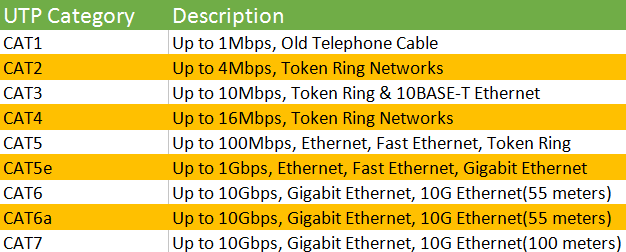
Coaxial Cables
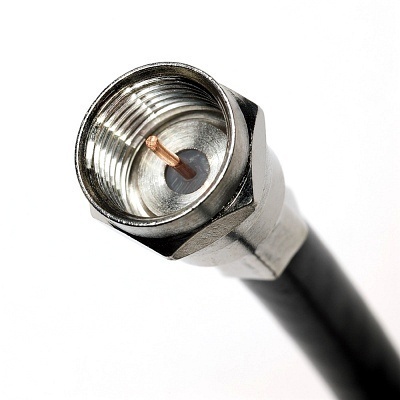 Coaxial cable acts as a high-frequency transmission cable which contains a single solid-copper core. A coaxial cable has over 80 times the transmission capability of the twisted-pair. It is commonly used to deliver television signals and to connect computers in a network as well, so people may get more familiar with this kind of network cable. There are two coaxial cables: 75 Ohm and 50 Ohm. What’s the application of them respectively?
Coaxial cable acts as a high-frequency transmission cable which contains a single solid-copper core. A coaxial cable has over 80 times the transmission capability of the twisted-pair. It is commonly used to deliver television signals and to connect computers in a network as well, so people may get more familiar with this kind of network cable. There are two coaxial cables: 75 Ohm and 50 Ohm. What’s the application of them respectively?
- 75 Ohm coaxial cable
The primary use of a 75 Ohm cable is to transmit a video signal. One of the typical applications is television signals over network cable, sometimes called signal feed cables. The most common connector used in this application is a Type F. Another application is video signals between components such as DVD players, VCRs or Receivers commonly known as audio/video (A/V) cables. In this case BNC and RCA connectors are most often found. In both of these applications RG59 with both solid center conductor (RG59B/U) and stranded center conductor (RG59A/U) as well as RG6 are often found.
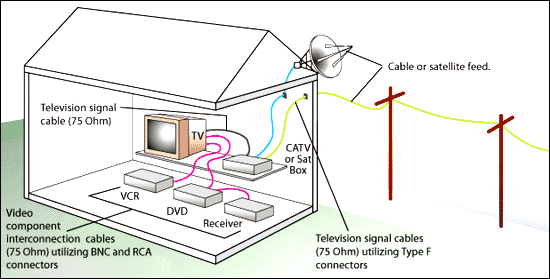
- 50 Ohm coaxial cable
The primary use of a 50 Ohm coaxial cable is transmission of a data signal in a two-way communication system. Some common applications for 50 Ohm coaxial cable are computer ethernet backbones, wireless antenna feed cables, GPS (Global Positioning Satellite) antenna feed cables and cell phone systems.
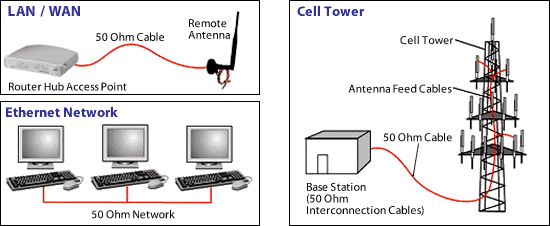
Fiber Optic Cable
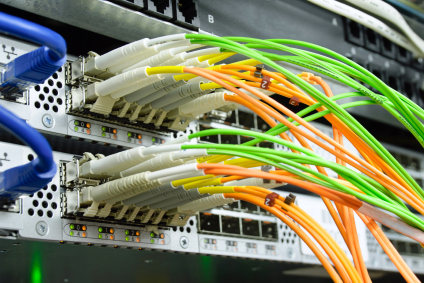
Computing and data communications are fast-moving technologies. There comes a new generation of transmission media—fiber optic cable. It refers to the complete assembly of fibers, which contain one or more optical fibers that are used to transmit data. Each of the optical fiber elements is individually coated by plastic layers and contained in a protective tube. Fiber optic cable transmits data as pulses of light go through tiny tubes of glass, the transmission capacity of which is 26,000 times higher than that of twisted-pair cable. When comparing with coaxial cables, fiber optic cables are lighter and reliable for transmitting data. They transmit information using beams of light at light speed rather than pulses of electricity.
Nowadays, there are two fiber optic cable types widely adopted in the field of data transfer—single mode fiber optic cable and multimode fiber optic cable. A single-mode optical fiber is a fiber that has a small core, and only allows one mode of light to propagate at a time. So it is generally adapted to high speed, long-distance applications. While a multimode optical fiber is a type of optical fiber with a core diameter larger than the wavelength of light transmitted and it is designed to carry multiple light rays, or modes at the same time. It is mostly used for communication over short distances because of its high capacity and reliability, serving as a backbone application in buildings.
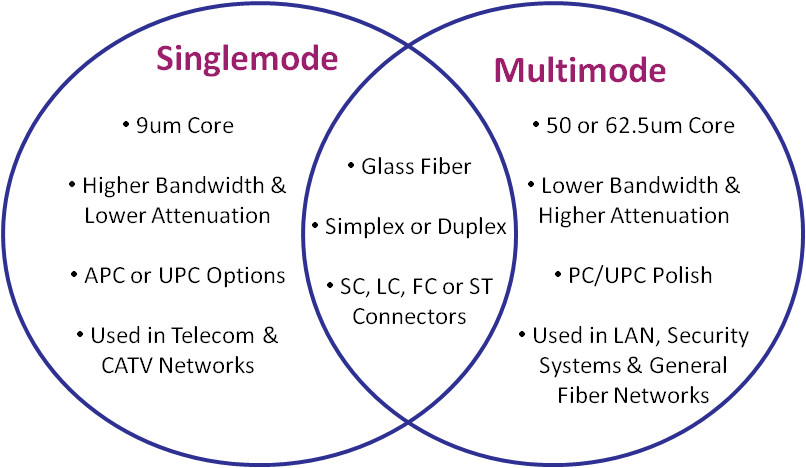
Conclusion of Twisted Pair vs Coaxial Cable vs Fiber Optic
As the technology in the field of the network is developing rapidly, network cable seems to become the trend for the increasing demand of the market. After learning the difference between twisted pair vs coaxial cable vs fiber optic, we know how to choose network cable. However, whether to choose twisted pair cables, coaxial cables or fiber optic cables still depends heavily on applications, which is subject to the cost, transmission distance and performance.
Related Article: Which Patch Cable Should I Choose for My Optical Transceiver?

